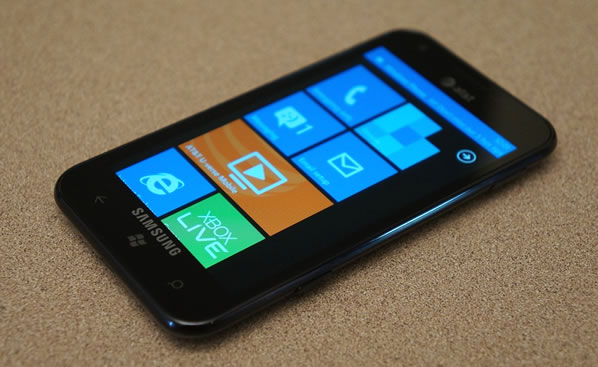The Samsung Focus S is one of the two new Windows Phone 7.5 smartphones for AT&T that succeed last year's Focus that was build around WP7. The second model is called Focus Flash (reviewed here), which is a more compact Windows Phone that is also more affordable. Of the two, the Focus S can be considered the spiritual successor to the Focus as it has a number of upmarket features over the smaller Focus Flash.
Where the original Focus had a strong familiar resemblance to the Samsung Galaxy S running Android, the Focus S is as close to a Windows Phone 7.5 version of the Galaxy S II as one can get.
Despite a nicer display and a much better camera, the Focus S shares the same processor and RAM as its lower-cost stablemate, which means that the everyday experience is largely the same. Still, the Focus S is an impressive smartphone, with fast performance and the familiar Windows Phone interface - flawed as it still may be. Read on to find out whether the Focus S is worth the extra $150 on-contract price over its Flash sibling.
If you were to remove the Windows Phone branding and hide the capacitive buttons below the display, you would not be faulted for mistaking the Samsung Focus S for a variant of the Galaxy S II line of Android smartphones. The design cues are very close and the only exterior hardware differences are the requisite capacitive buttons and physical camera key that is required by Windows Phone 7.5. While the Focus from last year had a couple of differentiating factors in its physical design, the Focus S does not break any industrial design ground and fits right in line with Samsung's other smartphones.
That means that the Focus S is exceptionally thin and light, measuring only 126mm x 66.8mm x 8.5mm (4.96in x 2.63in 0.33in) and weighing in at a feathery 111g (3.9oz). Unfortunately, that also means that it is rather cheap feeling, since it is made entirely of plastic - save for the display, of course.
The display is the same 4.3-inch, WVGA (480 x 800 pixel) resolution Super AMOLED Plus unit seen on the global and AT&T versions of the Galaxy S II. The 'Plus' part of the display is an upgrade over the displays on the Focus and Focus Flash and refers to its use of a standard RGB pixel layout as opposed to the much-derided PenTile layout. Colors are extremely vibrant, viewing angles are infinite, and its inky blacks complement the Windows Phone Metro interface well. I did not have any issues viewing the screen outdoors in bright light, which can be a point of difficulty for AMOLED displays.
Below the display are three capacitive buttons for back, Start, and search, as seen on all Windows Phone smartphones. Above it are the earpiece, light sensors, and a new 1.3 megapixel front-facing camera. The sides of the phone are home to a dual-stage camera key, power/sleep/unlock key (right side), and volume rocker (left side). All the buttons have good travel and feedback, but I noticed that they protrude out from the side of the phone a bit farther than most smartphones, which made them prone to being pressed while in a pocket (especially the camera key).

The Focus S features a patterned back that provides a modicum of grip when holding the phone. It's not as texture deep as the Galaxy S II, but it is better than a smooth, glossy back. Inset into the battery cover is the same 8 megapixel autofocus camera and flash that the Galaxy S II sports. However, due to the limitation of the Focus S' single-core processor, it does not record 1080p HD video, but maxes out at 720p resolution.
The Samsung Focus S is powered by a 1.4GHz, single-core Qualcomm processor. The phone performs swiftly, and Microsoft's attractive Metro interface scoots around with ease. The new processor doesn't make too much of a difference in every day use, but apps open up a tad quicker than on the 1GHz Focus, and processor-intensive games don't hold the phone back at all.

Windows Phone 7.5 offers a number of performance and usability enhancements over previous versions, including a form of multitasking and live tile support for third-party apps. Microsoft's vision of quick, glance-able information works as the company promises, but when apps are opened, it still takes longer than I would prefer for them to update with new information and be ready for use.
Surprisingly, the on-screen keyboard on the Focus S did not perform as well during my tests as it does on other Windows Phone smartphones. Instead of keeping up with my quick-tapping thumbs, the keyboard had a tendency to lag and then catch up, as if it were always two steps behind. I have a feeling that Samsung could address this with a software update, but it was quite frustrating.

